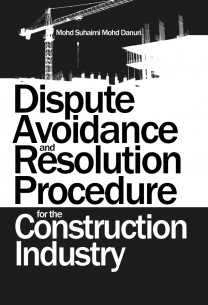Given the contribution of the construction industry to the national
economy, it is important for the relevant parties to make visible efforts
to ensure that the projects will be successfully implemented. Yet, it
must be noted that conflict tends to happen due to the complex nature of
the construction industry and the involvement of so many parties along the
contractual chain, adversarial relationship, uneven risk allocation and uneven
bargaining power. Therefore, it is necessary to have a proper mechanism
to avoid dispute in the first place, because once conflict turns into dispute it
could affect project success. Having said that however, the biggest challenge
came from some academicians and practitioners who were very skeptical as
they do not think dispute can be avoided. One of the reasons simply because
many publications in this area said that construction dispute is inevitable.
Furthermore, previous research and publications in this area are more focus on
dispute resolution rather than avoidance. Hence, it may explain why this book
seems to be among the pioneer to promote the concept of dispute avoidance.
It is hoped that this book could spark interest among the practitioners,
academicians, students and stakeholders to explore the viability of having
dispute avoidance procedure in place, and serve as the main reference book
for research in this field. This is a must-read book for students enrolled in
the construction-related programmes, and particularly relevant for quantity
surveying students and the construction law related courses offered in the
institution of higher learning.
Write a review
Your Name:Your Review: Note: HTML is not translated!
Rating: Bad Good
Enter the code in the box below:




